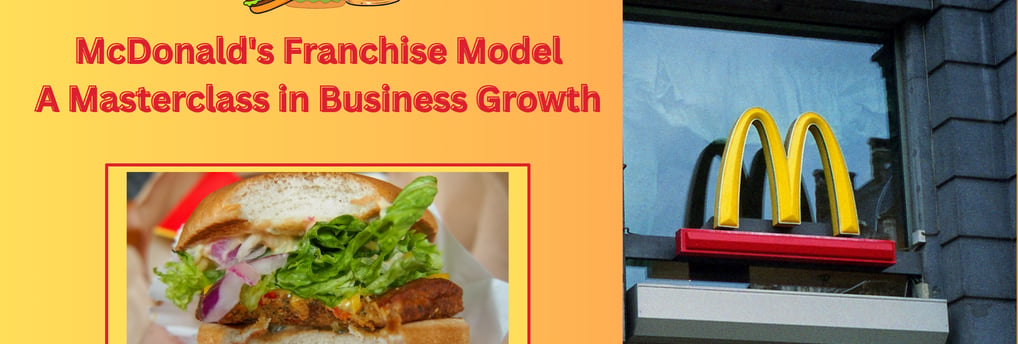McDonald's Franchise Model: A Masterclass in Business Growth
Ever wondered how McDonald's became a global fast-food giant with over 40,000 outlets worldwide? The answer lies in their powerful franchise model — a blueprint for scalability and consistency.
Gaurav Takle
3/11/20252 min read


Introduction
McDonald's has become a global fast-food giant not just by serving burgers, but by mastering the art of franchising. With over 40,000 outlets worldwide, McDonald's has set new benchmarks in process standardization, operational efficiency, and customer satisfaction. Let's explore how their franchise model reshaped the fast-food industry and what valuable lessons businesses can take from it.
The Origin of the Franchise Model
McDonald's started as a small burger joint founded by Richard and Maurice McDonald. The turning point came when Ray Kroc joined the company and introduced the franchise model, which became the foundation for its rapid growth. Kroc’s strategy was simple yet effective: ensure every McDonald's outlet delivers the same experience through strict process control and consistent service standards.
Key Components of McDonald's Franchise Model
Consistent Processes
McDonald's achieved uniformity by standardizing:
Food preparation techniques
Cooking times and temperatures
Restaurant layouts and designs
Employee training methods
This ensured that customers enjoyed a familiar experience at any McDonald's location worldwide.
Comprehensive Training Program
McDonald’s established "Hamburger University," a dedicated training institution that equips franchise owners and staff with the necessary skills to uphold quality and service standards.
Efficient Supply Chain Management
McDonald's developed a highly organized supply chain, ensuring fresh ingredients are delivered consistently across all outlets. By partnering with trusted vendors, the company maintained high quality while optimizing costs.
Strategic Real Estate Investment
Ray Kroc's approach of purchasing and leasing properties to franchisees became a core revenue driver. This strategy provided McDonald’s with long-term financial stability and allowed franchisees to focus on operations.
Localized Menu Innovations
McDonald's tailored its menu to meet regional tastes and cultural preferences. Examples include:
India's McAloo Tikki
Japan's Teriyaki Burger
The Middle Eastern McArabia
Impact on the Fast-Food Industry
McDonald's franchise model transformed the industry by:
Improving Service Speed: The "Speedee Service System" revolutionized quick-service efficiency.
Enabling Scalable Growth: The franchise model accelerated expansion with reduced financial risks.
Adapting Globally: By customizing products for local markets, McDonald's maintained cultural relevance worldwide.
Key Takeaways for Businesses
✅ Establish clear and standardized processes for consistent quality.
✅ Invest in staff training to ensure operational excellence.
✅ Understand regional customer preferences to tailor offerings effectively.
✅ Consider real estate as a strategic asset for long-term growth.
Conclusion
McDonald's franchise model exemplifies how businesses can achieve massive growth through structured processes, training, and customer focus. For companies aiming to scale efficiently, McDonald's strategy offers valuable insights and proven success strategies.
